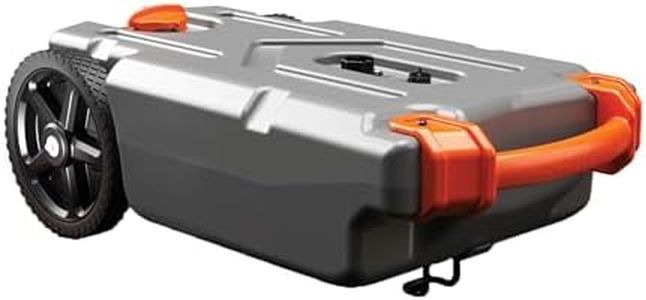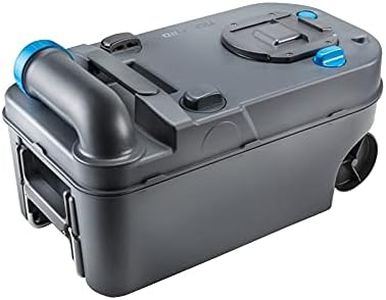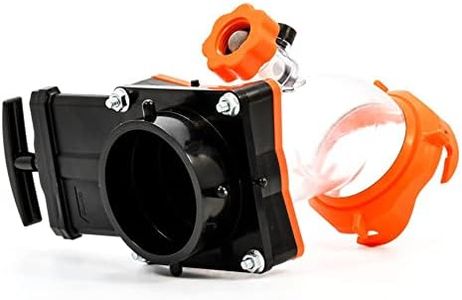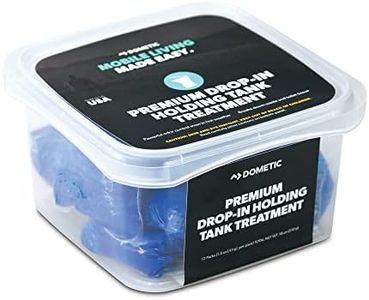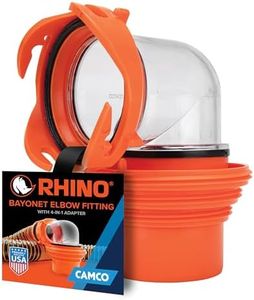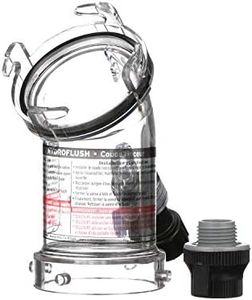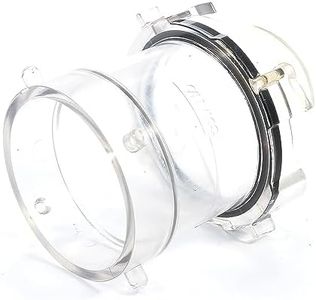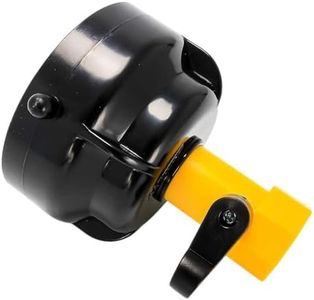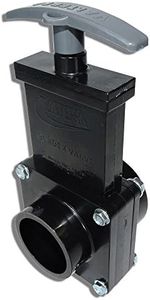We Use CookiesWe use cookies to enhance the security, performance,
functionality and for analytical and promotional activities. By continuing to browse this site you
are agreeing to our privacy policy
10 Best Rv Sewer Tank
From leading brands and best sellers available on the web.Buying Guide for the Best Rv Sewer Tank
Choosing the right RV sewer tank is important for hassle-free and sanitary travel. Whether you’re a weekend camper or on the road fulltime, the right tank will make waste management easier and more efficient. The best approach is to understand your travel habits, the size of your group, and how frequently you plan to access dumping facilities so you can match a tank’s size and features to your specific needs. Familiarize yourself with the key specifications so you can confidently select a sewer tank that fits your lifestyle and your RV’s requirements.Tank CapacityTank capacity refers to how much waste the tank can hold, usually measured in gallons. This is one of the most important specs, as it directly affects how often you’ll need to empty the tank. Small tanks (10–20 gallons) are suitable for solo travelers or short trips, while medium tanks (21–30 gallons) are great for couples or weekend campers. Large tanks (31 gallons or more) are best for families or extended stays. To pick the right capacity, consider the length of your typical trips and the number of people using the RV, then choose a size that minimizes how often you’ll need to visit dump stations.
PortabilityPortability describes how easy it is to move the tank when it’s full. Some tanks are built-in and fixed, while others are portable 'tote tanks' that can be wheeled to a dump station. Lightweight, compact tanks are easier to transport but may require more frequent trips due to smaller capacity. Heavier tanks with large wheels and handles are easier to move over distance, but they’re bulkier. If you have a built-in tank, portability isn't a factor, but if you need to transfer waste manually, consider how far you’ll need to carry or tow the full tank and choose a style that suits your physical ability and typical campsite setup.
Construction MaterialThe construction material affects durability, weight, and ease of cleaning. Most RV sewer tanks are made of heavy-duty plastic, which is resistant to chemicals and corrosion. Lightweight plastics are easier to handle but may be less durable for frequent use. More robust tanks may be heavier but can last longer and withstand rough handling. For frequent travelers, a tougher material is ideal, while occasional users can opt for something lighter for the sake of convenience.
Emptying and Cleaning FeaturesThese features include built-in flush valves, wide-mouth openings, and venting systems. A tank with good emptying features will drain faster, splash less, and be easier to rinse clean. Simple designs might require more effort and risk more mess. Tanks with integrated rinse ports or hose adapters make cleaning after use much easier and more sanitary. Pick a tank with features that match how much effort you want to spend on maintenance and how important cleanliness is to you.
Tank MonitoringTank monitoring refers to the ability to track how full your tank is. Built-in RV tanks often have electronic sensors, while portable tanks may have simple visual indicators. Reliable monitoring helps prevent overflows and messes. For longer trips or larger groups, a good monitoring system is a major convenience. If you prefer low hassle, consider a tank with clear or easily readable fill indicators.
CompatibilityCompatibility means making sure your sewer tank will easily connect with your RV’s plumbing or hoses. Connection types and sizes can vary; common sizes are 3-inch fittings. Some tanks come with universal adapters, while others are specific to a certain brand or system. Double-check that the fittings match your RV’s setup to ensure a leak-free, easy connection. If you plan to use the tank across multiple RVs or campsites, universal compatibility is advantageous.
